|
Well, dear readers, it seems as though we are in the '20s again, and since "Dry January" seems to be a growing trend, I thought I would look at some historic alternatives to alcohol for those who don't imbibe or those who are taking a break. Prohibition, the 18th Amendment to the Constitution banning importation, production, sale, and consumption of alcohol in the United States, officially took effect across the country in January, 1920. It was a long, long road to the Constitutional amendment. Begun in the late 18th century, the Temperance movement was a response to the increasing consumption of distilled liquor by the general populace. Rum, distilled by slaves from molasses produced by brutal Caribbean sugar plantations, was flooding the market at the end of the 18th century. Cider, ale, and small beer were common daily beverages. John Adams was known to enjoy hard cider with breakfast. George Washington adored Maderia. All the founding fathers drank at levels that seem excessive by today's standards. And the Whisky Rebellion was just the beginning of American distilling. Alcohol was a way to preserve and consume calories (whether from apples or grain) and was known to be safer for drinking than most water. But it had unsavory unintended consequences. For Temperance advocates, alcohol enhanced all of humanity's sins: drunkenness begat violence, both domestic and public, and wasted hard-earned wages while children starved. In February, 1751, the famed British satirical artist William Hogarth published a pair of etchings in reaction to the Gin Craze. They were meant to be viewed side-by-side, with "Beer Street" at the left and "Gin Lane" at the right. The etchings were accompanied by the following poem: Gin, cursed Fiend, with Fury fraught, Makes human Race a Prey. It enters by a deadly Draught And steals our Life away. Virtue and Truth, driv'n to Despair Its Rage compells to fly, But cherishes with hellish Care Theft, Murder, Perjury. Damned Cup! that on the Vitals preys That liquid Fire contains, Which Madness to the heart conveys, And rolls it thro' the Veins. The pair of images was meant to illustrate the evils of gin consumption in London. In the above image, emaciated drunks line the streets. A drunken woman lets her baby fall to its death. A person has hung themselves in a dilapidated building and other dwellings are falling down. The distillery, pawn shop, and coffin maker are all doing very well and EVERYONE is drinking gin. Meanwhile, on Beer Street, healthily rotund, industrious people are resting from their day's work to have a beer. The pawn broker's building is a dilapidated ruin, the dwellings in good shape as construction begins on another, and everyone is well-dressed and otherwise in good spirits. This images was accompanied by the following poem: Beer, happy Produce of our Isle Can sinewy Strength impart, And wearied with Fatigue and Toil Can cheer each manly Heart. Labour and Art upheld by Thee Successfully advance, We quaff Thy balmy Juice with Glee And Water leave to France. Genius of Health, thy grateful Taste Rivals the Cup of Jove, And warms each English generous Breast With Liberty and Love! If we were to compare 18th century Britain to America, we might replace gin with rum (with its problematic connections to slavery), and beer with hard cider, the drink of choice for thousands of colonists and later American citizens. William Henry Harrison won the 1840 presidential election by running as the "log cabin and cider" candidate - meaning a Western pioneer, the better to appeal to rural voters against the much-maligned Martin Van Buren, of upstate New York, who lost his reelection campaign. But while whiskey, rum, and "fortified" wines like Madeira and port remained popular beverages throughout the 18th and 19th century, alcohol consumption remained as a problem for women and children. Although many Temperance advocates initially just targeted distilled spirits, soon beer and wine and indeed, any alcohol at all, was decried as the root of many evils. Many abolitionists were also Temperance advocates. Lyman Beecher, father to cookbook author Catherine Beecher and her more famous author sister, Harriet Beecher Stowe, was an early Temperance advocate. Connected to a religious revival in America as part of the Second Great Awakening, Temperance gained traction in communities throughout the United States. The above image is a 19th century analog to the Hogarth images. At left, a healthy-looking family kneels before a man who is perhaps a minister. The angel of Temperance with her anti-alcohol pledge floats down on a cloud, with cupids and a cornucopia of prosperity. In the background, a new and prosperous looking church At the right, a drunkard, bottle in hand, sprawls on the floor. His overworked wife and starving children huddle in the background, with the little girl praying to the glorious angel. Sad looking shacks appear behind them, with a mob of people in the street. After the Civil War, the fight for Temperance continued. Throughout the 19th century, towns, counties, and even states held referendums on whether or not to go "dry." Some advocates installed drinking fountains in public squares in cities around the country. The Women's Christian Temperance Union, one of the strongest proponents of Temperance, formed in 1874. In 1900, Carrie Nation took to violence, chopping up saloons with a hatchet, to try to suppress alcoholism. In 1913, the federal income tax was instated. For the first time, the federal government had a form of tax income that did NOT come directly from the sale of alcohol, which had previously been the main source of tax income. During WWI, the Temperance movement and the Prohibitionists used the threat of wartime and even the need to conserve grain as a reason to instate Prohibition. Here, the threat of alcoholism and "hardened liver" is compared to the deaths caused by the common house fly. At the bottom, the flyer calls for a Constitutional Amendment. Published in 1917, this flyer was created at the outbreak of World War I. Although the United States was not at war when the above image was published in Puck, it nevertheless made a case to reinstate the Army canteen, where beer and soft drinks were sold. Congress had apparently disbanded them by grace of the Women's Christian Temperance Movement - illustrated here by a hysterical older woman in blue and accompanied by an elderly minister and, in the rear, a "timid legislator." The comparison is made between an Army-sponsored canteen and a public "dive," where soldiers drink to wrack and ruin and can consort with the prostitute implied by her red dress and shoes in the lower right hand corner. This illustrates that some people still fought to keep beer and hard cider as a part of daily life, even as public opinion against distilled spirits waxed to a frenzy. Thirty-six states did, indeed, ratify the 18th Amendment on January 16, 1919. It read, "After one year from the ratification of this article the manufacture, sale, or transportation of intoxicating liquors within, the importation thereof into, or the exportation thereof from the United States and all territory subject to the jurisdiction thereof for beverage purposes is hereby prohibited." Prohibition, as it came to be known, went into effect on January 16, 1920. Prohibition came to represent government overreach into peoples' daily lives and the criminalization of alcohol allowed organized crime to flourish in the 1920s, despite the best efforts of police. Gangsters like the infamous Al Capone, wielding machine guns they learned to use in the First World War, made fortunes off of illegal distilleries, speakeasies, and other criminal enterprises, all while dodging federal taxes. Well, at least until the Feds catch up with you, right Al? The wealthy could afford to keep consuming booze (often from the wine cellars amassed on their private estates) as police and prosecutors largely looked the other way. The poor and middle class risked their lives on bathtub gin, wood alcohol, and methylated spirits (also known as denatured alcohol) which caused blindness or even death. The illegality meant that alcohol production was unregulated and therefore dangerous to human health. Prohibition was ultimately a failure. The stock market crash of 1929 and subsequent Great Depression left many people in severe economic (and mental) distress. It was repealed on December 5, 1933, with the ratification of the 21st Amendment, which specifically repealed the 18th. For many, the return of the ability to self-medicate with alcohol helped temper the despair of the Depression, although it likely ruined as many lives as it helped. But while romanticized notions of the "Roaring Twenties" continue today, we can learn from the problems that Temperance sought to solve. Absenteeism and incarceration both declined during Prohibition. Alcohol consumption overall did decline in the 20th century, thanks in large part to the Temperance movement. Today, more and more people are reassessing their relationship with alcohol. In 2006, food writer John Ore coined the term "Drynuary" to describe what he and his wife considered to be a post-holiday alcohol detox. "Drynuary" or "Dry January" has been embraced by an increasing number of people and while the peer pressure to consume alcohol in social settings still exists, it is becoming more acceptable to abstain in public. Are we on the brink of a new Temperance movement? Probably not, but interesting to see the historical parallels. As we are in full swing of "Dry January," and as more people are embracing temperance, we can look to the past for interesting non-alcoholic beverages to tempt our palates. The nice thing about having an extensive library is that it is easy to do research when I want to - I just head upstairs to my little office and library, tucked up under the eaves of our little house. I pulled a couple of 1920s cookbooks that revealed some fascinating recipes. Coffee and tea were the most common alcohol replacers in polite society, but a number of fruit-based beverages and punches were also popular. Of course, most of them are very heavy on the sugar. The rise of soda fountains in the 1900s was in part a direct response to Temperance - it was a wholesome place for young people, women, and families to meet and socialize. It also meant that many Americans were replacing the vice of alcohol with what we know today to be the vice of sugar. Good Housekeeping Book of Menus, Recipes, and Household Discoveries (1922)The first book I perused was not this one, but I thought I would start here because it is the oldest of the 1920s cookbooks I looked at and its recipes were among the most interesting. Good Housekeeping's Book of Menus, Recipes, and Household Discoveries was published in 1922. Don't these sound delightful? "Apple Tree Dulcet" in particular is a brilliant name, although it's much more of a dessert than a beverage. "Gingerade," made with fresh or "green" ginger root also sounds delightful, if spicy. Grapefruit PunchOf these I think the Grapefruit Punch sounded the most delicious. I love both grapefruit and maraschino cherries, but have never had them together. I often drink half grapefruit juice, half ginger ale as a bitter-sweet winter tonic. 2 cupfuls water 3/4 cupful sugar 1 cupful grapefruit juice 1/2 cupful grapefruit pulp juice of 1 lemon 1/4 cupful maraschino cherries mineral water Combine the water and sugar, boil one minute, and let cool. Meanwhile, extract the grapefruit juice and to this add the grapefruit pulp and the lemon-juice. Allow to chill thoroughly and then add the maraschino cherries cut in halves. Dilute with mineral ice-water and serve very cold. Westminster Church (Utica, NY) Cook Book (1924)I love collecting community cookbooks - the earlier the better. This particularly nice one from Utica, NY (which is also where I found it), has just one page of beverages. Published in 1924, it includes a homemade version of what was likely a soda fountain drink: Strawberry Flip. Note that it calls for only one TABLESPOON of vanilla ice cream. Per serving, of course. The one that seems the most interesting to me is the first Fruit Punch, by Bessie C.B. Capron. Fruit Punch1 cup sugar 1 cup very strong tea (black) 2/3 cup orange juice 1/3 cup lemon juice 1 pint ginger ale 1 pint appolinaris This makes enough for 10 glasses. Okay, this probably needs a little translation for most people. To make the tea very strong, steep 2-3 bags in one cup of boiling water. The orange and lemon juice should be fresh-squeezed. And the ginger ale is probably better if you can find something a little stronger than your garden variety - a craft ginger ale would do nicely. And appolinaris? That's a German type of sparkling mineral water. Known as the "Queen of Table Waters," Appolinaris was a brand name mineral water discovered in the 1850s that is still around today. Although these days it's owned by Coca-Cola. This recipe is actually somewhat similar to 18th century punches that called for sugar, citrus juices, black tea, and sparkling water, albeit with the addition of strong spirits like rum and brandy (see: Fish House Punch). Standard Cookbook - For All Occasions (1925)Marion Lockhart's Standard Cookbook is a teensy tiny little hard cover (hence the fingers to hold it open). Published in 1925, it has a wide variety of punches, which is lovely. I do love malted milk, but I'm wary of raw eggs, so the "Egg Malted Milk" is not one I would probably attempt. However, the "Currant and Raspberry Punch" sounds divine. Currant and Raspberry PunchTake 1/2 glass (about 3-4 ounces) currant jelly and dissolve in 1 cup boiling water. To this add 1 cup raspberry sirup and 1 pint fresh water. Pour over ice in punch-bowl, then add 1 quart charged (sparkling) water. This makes about 2 quarts and seems like the perfect pink party punch to serve for Valentine's Day or a girly party. Despite the syrup and jelly, it also probably isn't too sweet, as you're cutting about 1 pint of sweet stuff with 1 pint of water and a quart of sparkling water. New Delineator Recipes (1929)And last but not least! The New Delineator Recipes. Published in 1929, this one comes with a few quite lovely photos. "Reception Chocolate" looks delicious and would be perfect for a winter hygge party. "Veranda Punch" listed here is very similar to the "Fruit Punch" listed above. Of all of these recipes, "Grape High Ball" sounds the most interesting, in part because it uses Niagara grapes. If you live in the Northeast, you can still find both Concord and Niagara grapes at some U-Pick orchards. If you've never had Niagara grapes, I recommend trying them if you see them. A dusky golden color, neither they nor the classic deep purple Concords are much like today's table grapes. Niagara grapes are very soft, with slippery-sweet insides and seeds. But they have a lovely flavor - almost perfumed, and would make a sophisticated beverage. Niagara Grape High BallFor sake of ease, I am combining the two recipe instructions. Wash grapes and boil [until] skin, pulp, and seeds separate. Press through a jelly bag and to every pint of juice add one-half cup of sugar. Boil for twenty minutes and chill. In glasses half-filled with shaved ice, add equal parts syrup and charged (sparkling) water. Lemon is an attractive addition. Well, that's all for now folks. Are any of you attempting a Dry January? If so, what do you normally drink for festive occasions? Share in the comments!
And, as always, if you enjoyed this (long!) post, please consider becoming a member of The Food Historian! You can join online here, or you can join us on Patreon. Members get access to members-only sections of this website, special updates, plus discounts on future events and classes. And you'll help support free content like this for everyone. Join today!
0 Comments
Your comment will be posted after it is approved.
Leave a Reply. |
AuthorSarah Wassberg Johnson has an MA in Public History from the University at Albany and studies early 20th century food history. Archives
July 2024
Categories
All
|
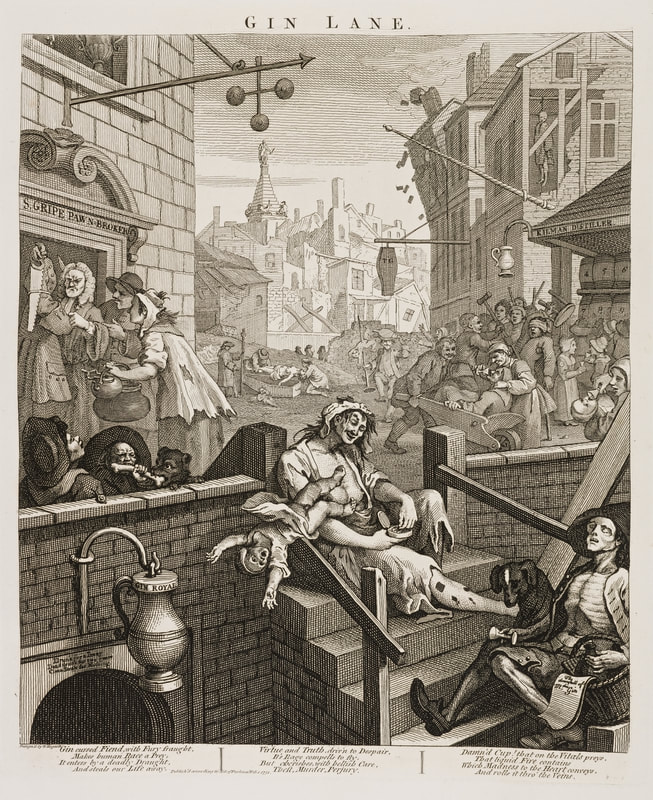
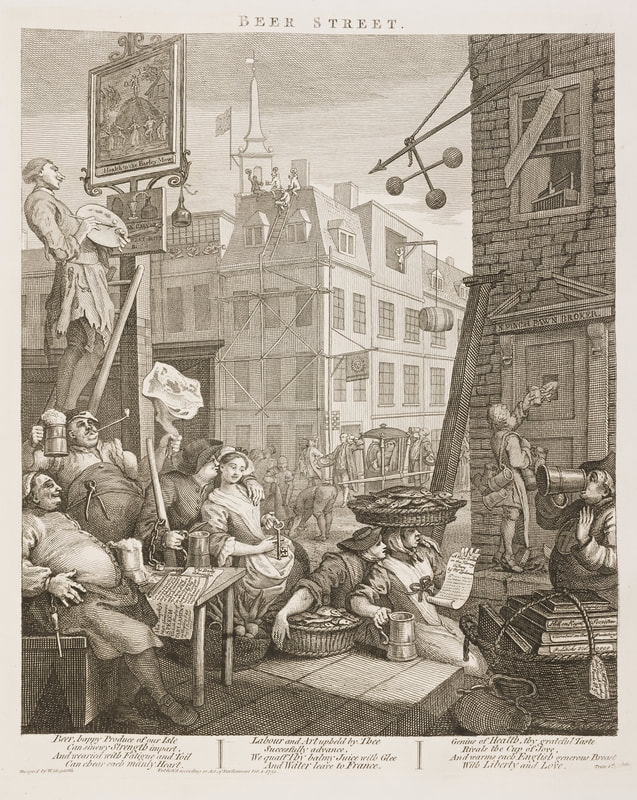
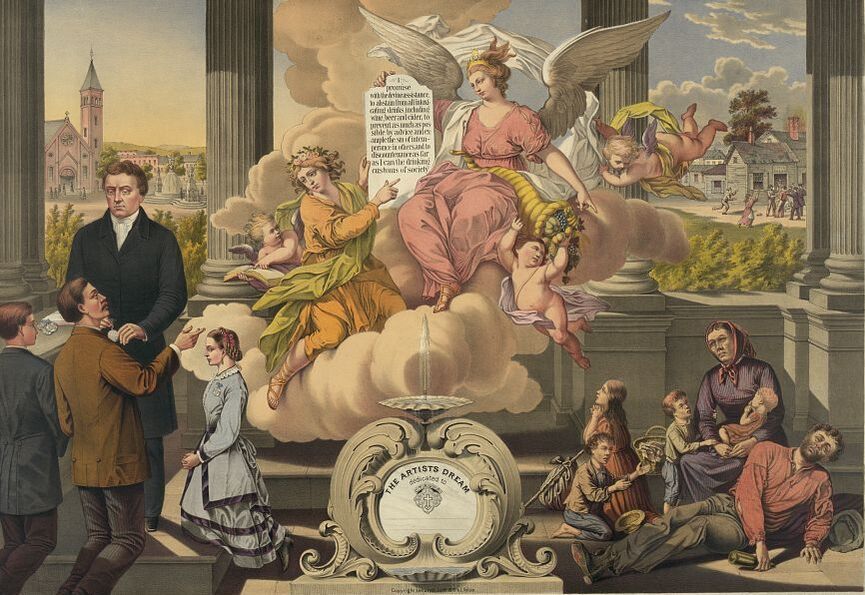
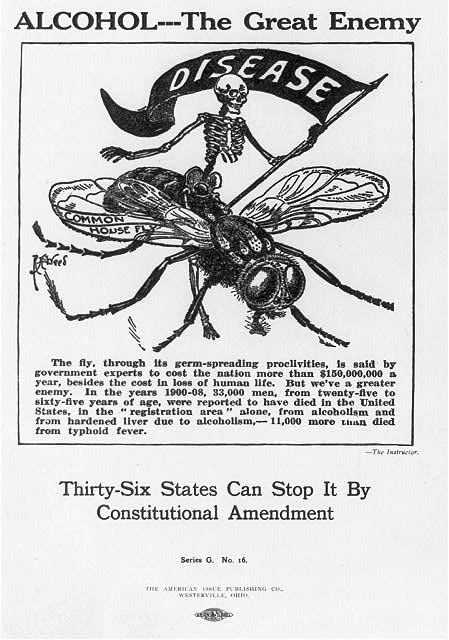
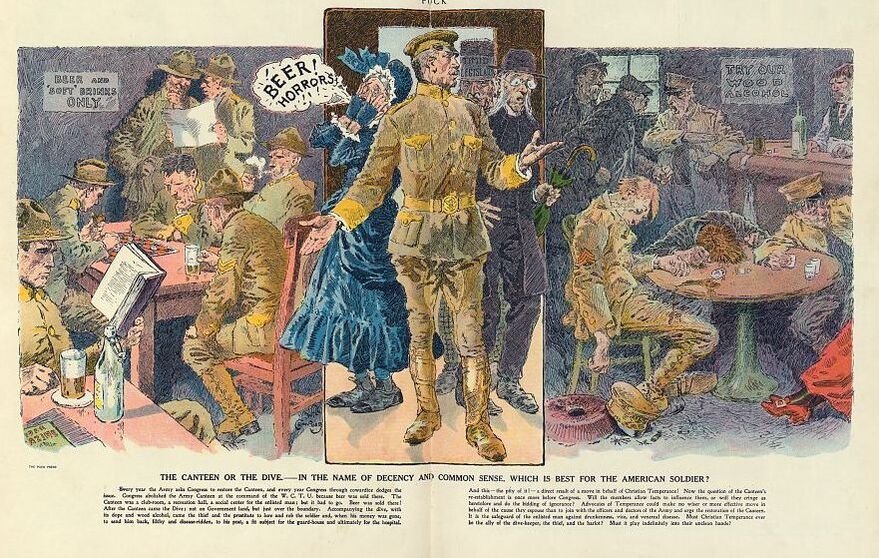
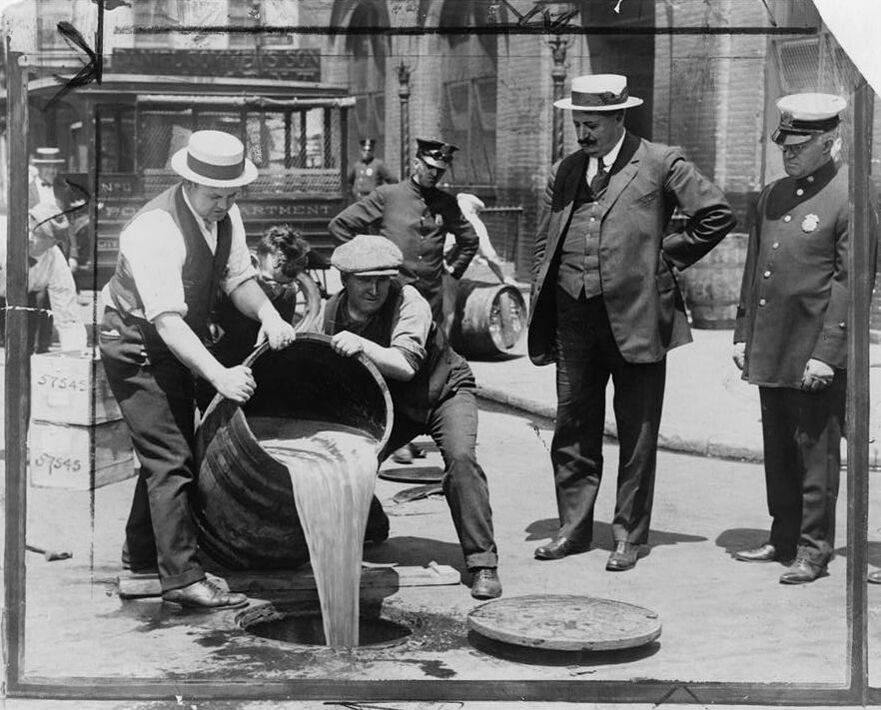
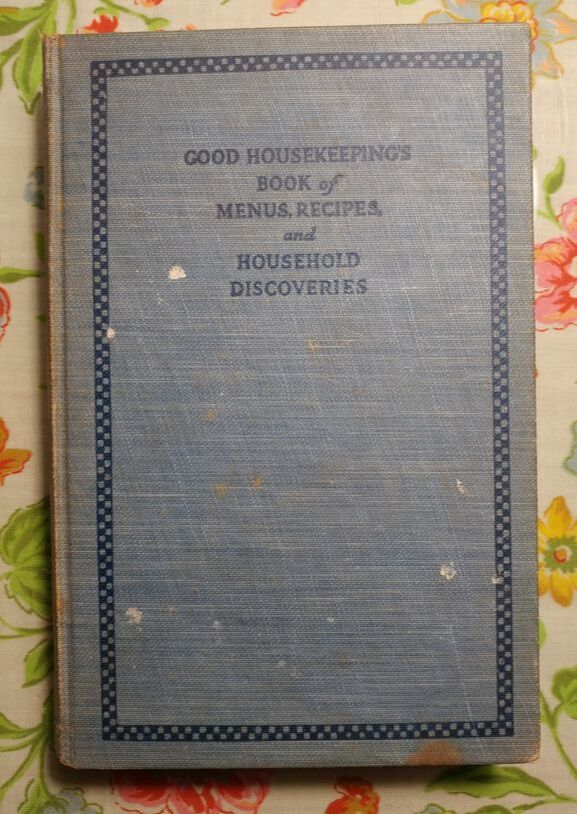
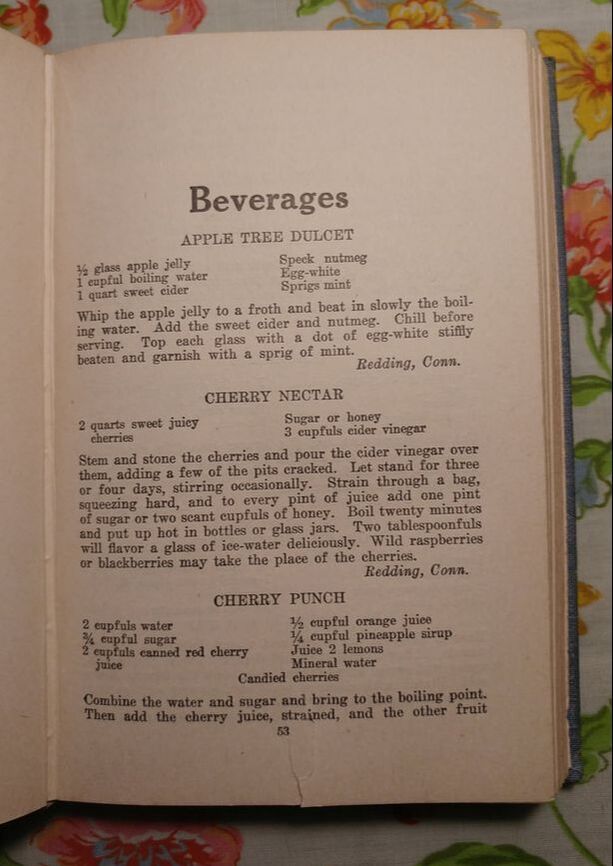
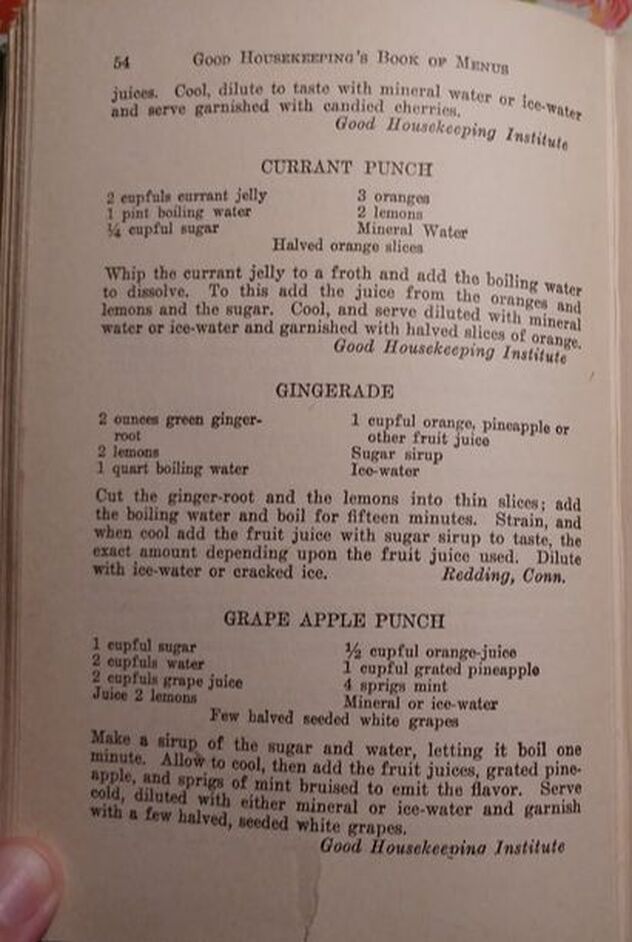
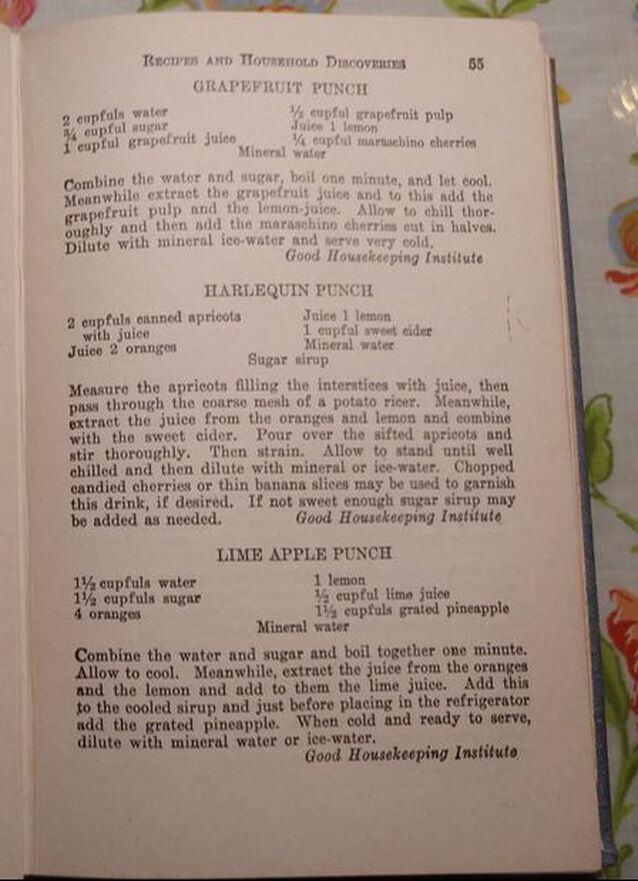
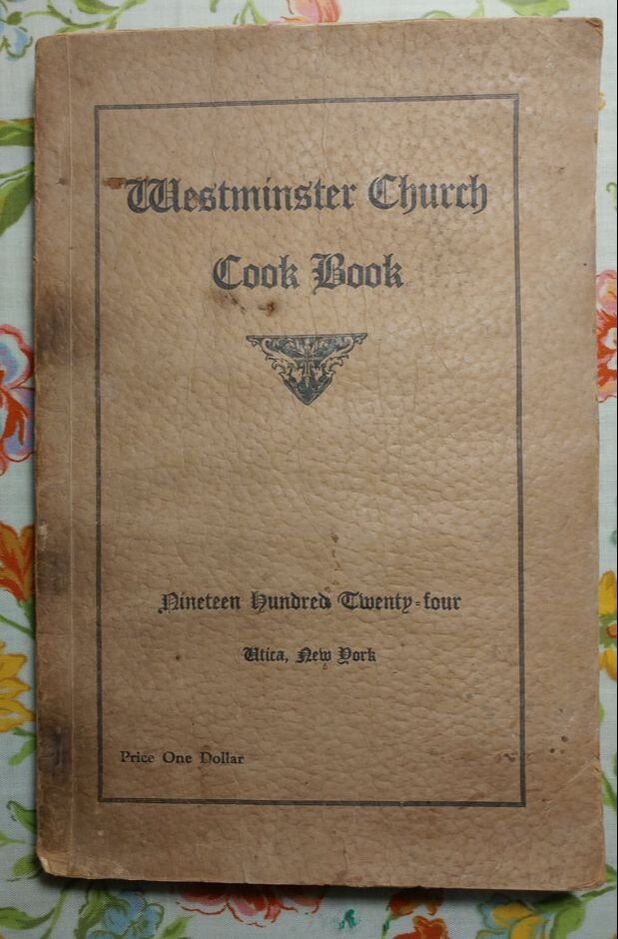
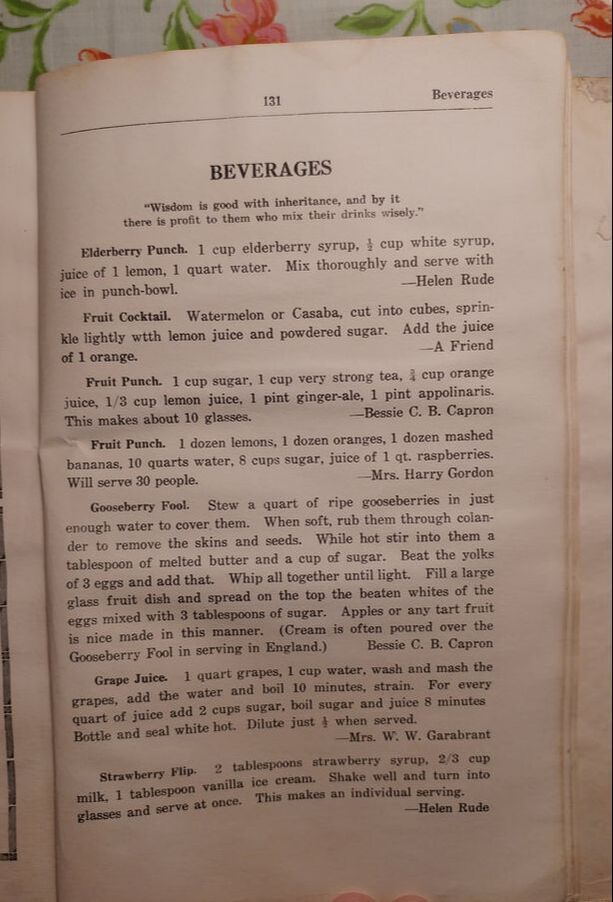
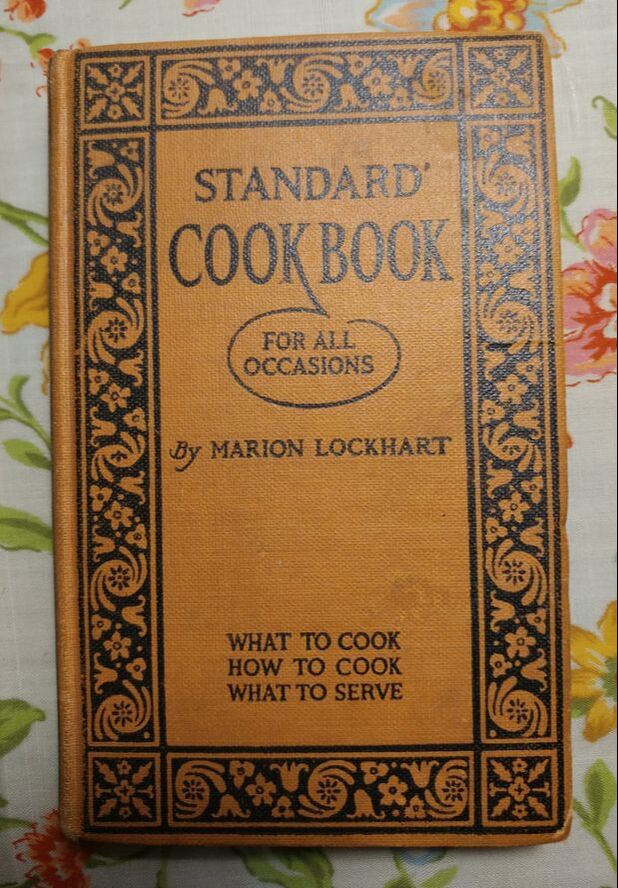
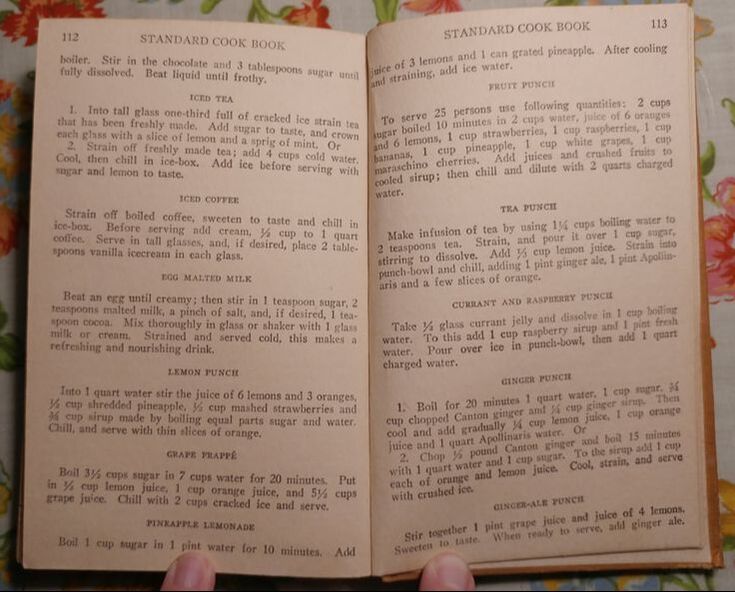
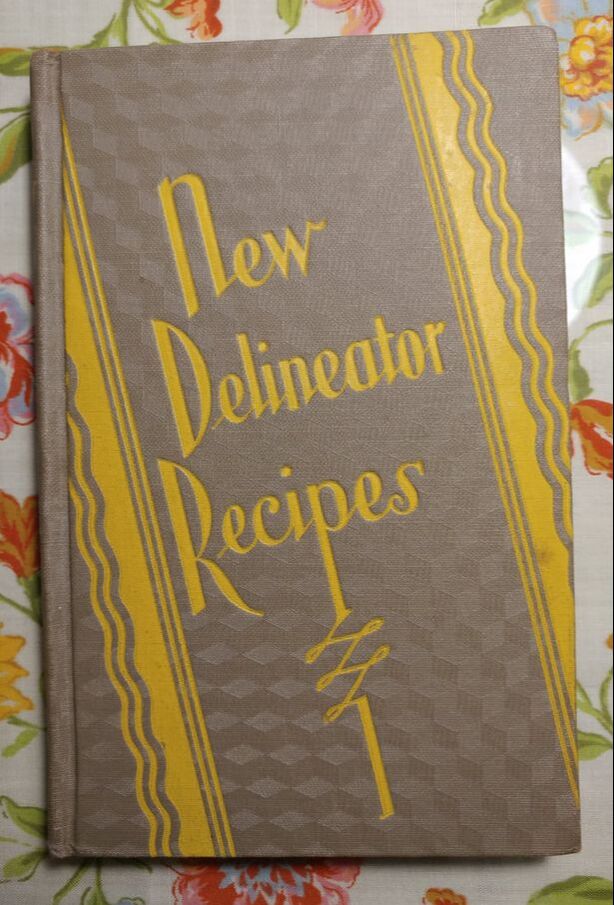
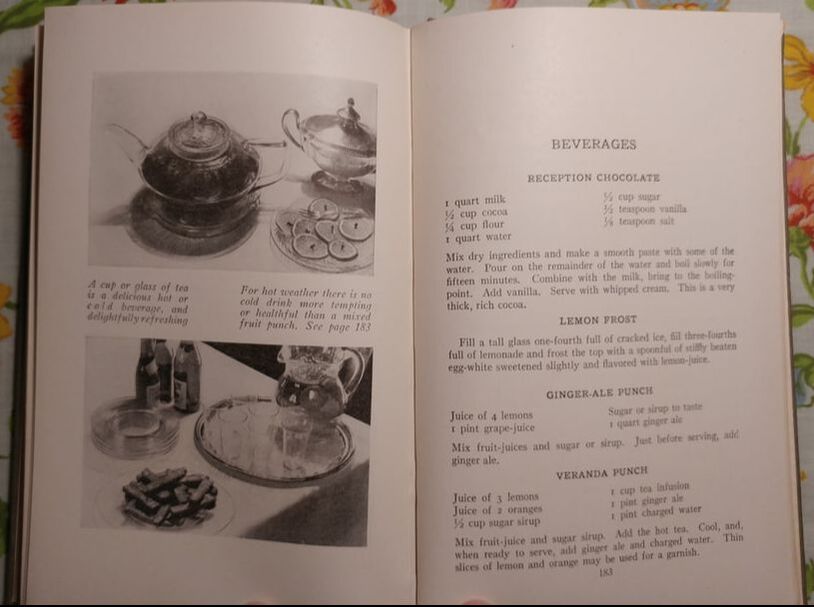
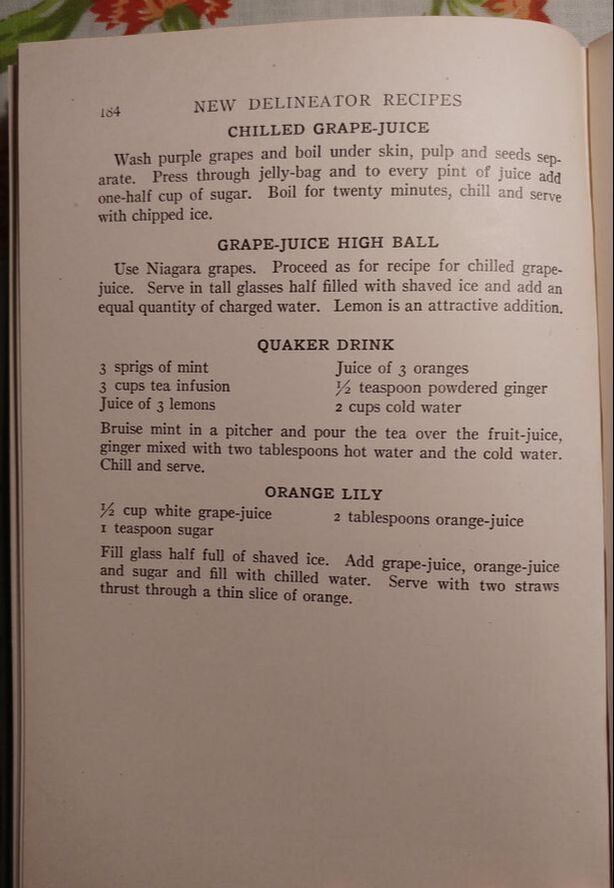

 RSS Feed
RSS Feed